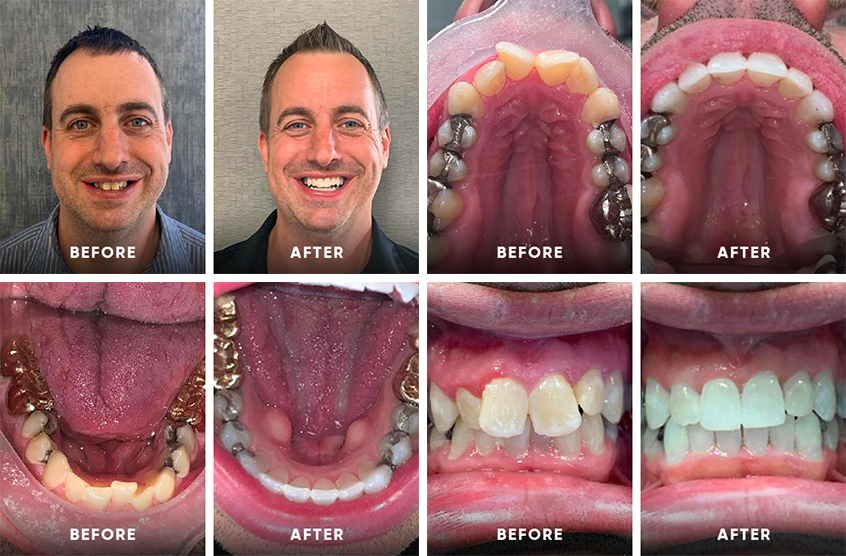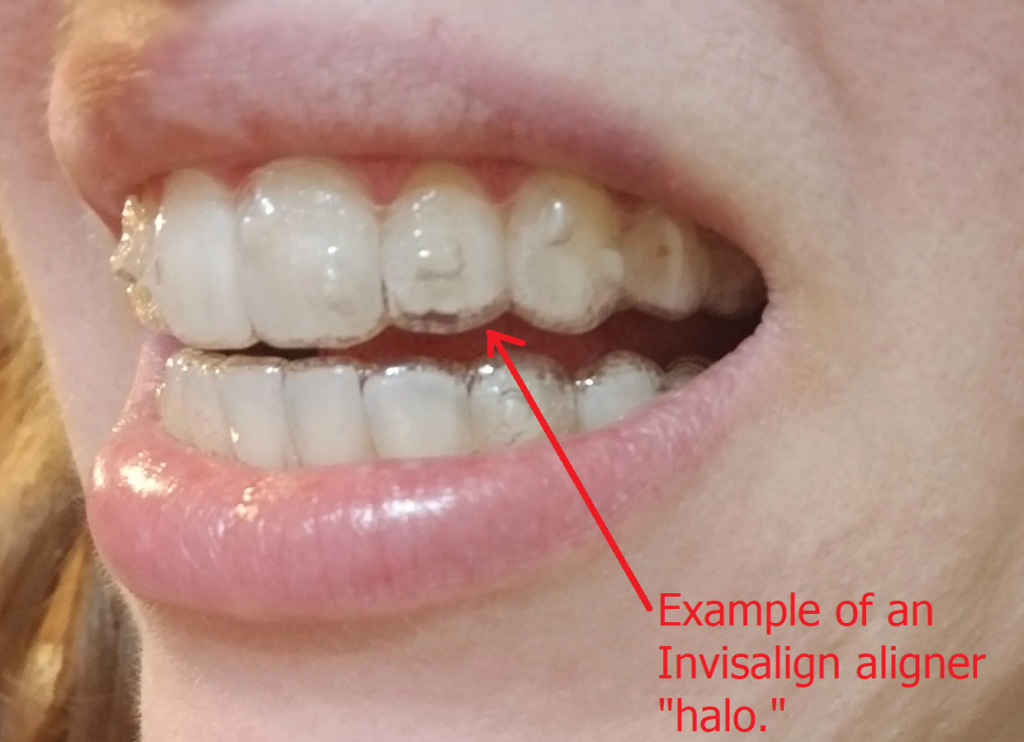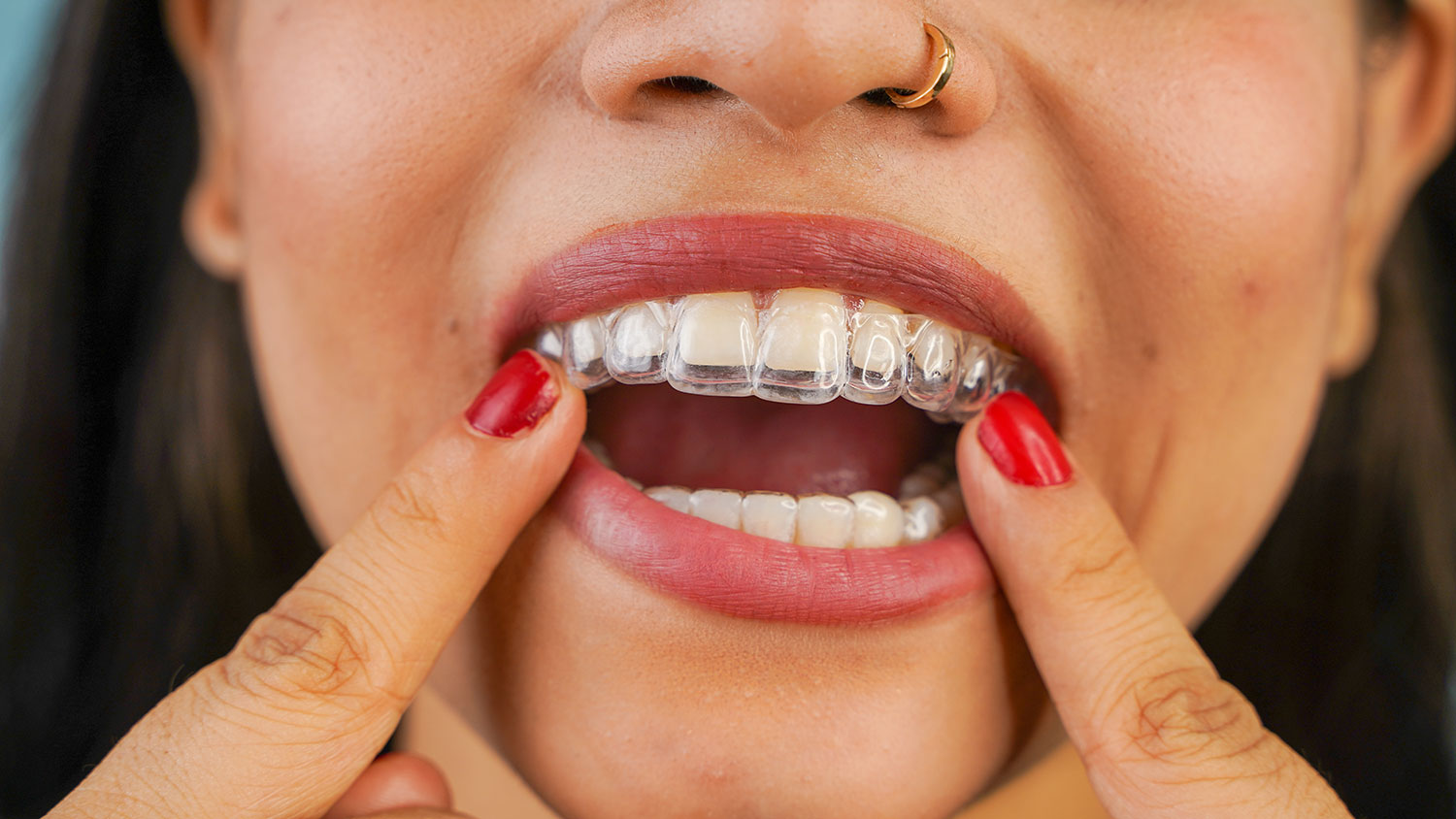What to Expect Throughout Your Invisalign Journey: A Comprehensive Introduction
What to Expect Throughout Your Invisalign Journey: A Comprehensive Introduction
Blog Article
Invisalign vs. Conventional Braces: Which Alternative Is Right for You?
When taking into consideration orthodontic treatment, the choice in between Invisalign and conventional dental braces provides numerous important factors that merit cautious assessment. Invisalign supplies a discreet choice with removable aligners, while traditional dental braces provide a much more noticeable yet effective solution for serious imbalance. Each option incorporates distinct advantages and disadvantages associated with visual appeals, convenience, treatment duration, and cost. Recognizing these nuances is vital for making an informed decision that straightens with your personal preferences and way of living. The inquiry remains: which option will best satisfy your orthodontic requirements and assumptions?
Introduction of Therapy Alternatives

On the other hand, conventional dental braces consist of metal braces and cords that are bound to the teeth. This approach applies constant stress in time to attain alignment. While effective for intricate orthodontic issues, conventional braces call for routine check outs for changes and can pose challenges in keeping oral hygiene because of the problem of cleaning up about cords and braces.
Both options have their advantages, and the option usually pivots on specific dental conditions, lifestyle preferences, and patient compliance. Eventually, consulting an orthodontic specialist is crucial for figuring out the most suitable treatment strategy customized to specific demands. Recognizing the subtleties of each alternative can dramatically affect the general success of orthodontic treatment.
Aesthetic Considerations
A substantial aspect influencing the option between Invisalign and conventional braces is the visual charm each therapy uses. Invisalign aligners are crafted from clear plastic, making them basically unseen when used.
On the other hand, traditional dental braces consist of steel brackets and cables, which can be extra visible. While developments in orthodontic technology have actually led to the advancement of smaller sized brackets and colored elastics, typical braces still keep an even more conspicuous profile. For some people, the presence of braces might deter them from seeking essential treatment.
Ultimately, the selection between Invisalign and standard dental braces may depend upon individual choices relating to aesthetic appeals. People who prioritize discernment frequently favor Invisalign, while those that are much less worried concerning presence might opt for standard dental braces. Recognizing the visual effects of each option is vital for making an educated decision that lines up with one's way of life and preferences.
Convenience and Convenience

In regards to benefit, Invisalign aligners are removable, allowing individuals to appreciate their favored foods without constraint and keep ideal oral health. Cleaning and flossing are streamlined, as the aligners can be secured during these routines, whereas conventional braces require careful maneuvering around cords and braces.
In contrast, traditional dental braces require regular modifications, making them less hassle-free for those with hectic schedules. On the whole, the comfort and ease of Invisalign make it an appealing selection for many people seeking orthodontic therapy.
Therapy Duration and Effectiveness
While both Invisalign and typical braces are effective in remedying oral misalignments, the period of therapy can vary significantly in between the 2 choices. Normally, Invisalign treatment can take anywhere from 12 to 18 months, depending upon the intricacy of the case. The clear aligners function by slowly changing teeth right into their preferred placements, and regular follow-ups with an orthodontist assistance ensure development continues to be on track.
In comparison, traditional braces often require a longer dedication, generally varying from 18 months to three years. This is because of their fixed nature and using braces and wires, which can be much more efficient for extreme this website imbalances and complex situations (Invisalign). The therapy effectiveness of typical dental braces is well-documented, as they permit for exact modifications and higher control over tooth motion
Ultimately, the option in between Invisalign and conventional braces might depend upon both the anticipated treatment duration and the details dental concerns handy. Consulting with an orthodontist is important, as they can supply tailored recommendations based on specific demands, making certain the picked technique lines up with desired timeframes and outcomes.
Price Contrast and Insurance Policy Choices
Cost plays a substantial duty in the decision-making process for individuals considering orthodontic therapy, whether selecting Invisalign or conventional braces. Usually, the expense of Invisalign ranges from $3,000 to $8,000, while typical dental braces normally cost in between $2,000 and $6,000. Elements influencing these prices consist of the complexity of the instance, the duration of therapy, and geographical place.
Insurance policy insurance coverage can dramatically affect out-of-pocket expenses. Several oral insurance strategies offer partial coverage for orthodontic therapies, but the specifics can go differ widely. It is critical for clients to examine their insurance plan to establish the degree of coverage for either choice. Generally, typical dental braces might be much more regularly covered by insurance coverage strategies compared to Invisalign, which some insurance providers classify as a cosmetic treatment.
Additionally, several orthodontic methods supply flexible layaway plan, making both therapy choices extra easily accessible. People should ask about potential financing options and discount rates for in advance repayments. Reviewing the complete price, consisting of insurance policy advantages and settlement strategies, is essential for making an informed choice that straightens with both visual preferences and budget plan considerations.

Verdict
In recap, the choice between Invisalign and conventional dental braces hinges on numerous elements, consisting of aesthetic choices, convenience, treatment duration, and cost. Invisalign uses a discreet, removable alternative that promotes oral health and dietary versatility, while conventional dental braces may be preferable for intricate dental issues and often come at a lower price point. Ultimately, assessment with an orthodontist is important to analyze private circumstances and identify the most proper therapy option for accomplishing optimum dental positioning.
When taking into consideration orthodontic therapy, the choice between Invisalign and standard braces offers numerous important elements that merit cautious analysis.Contrasting Invisalign and traditional dental braces reveals distinct treatment options for orthodontic adjustment.While both Invisalign and standard dental braces are efficient in fixing dental misalignments, the duration of treatment can vary substantially in between the 2 alternatives.Expense plays a substantial duty in the decision-making procedure for individuals thinking about orthodontic treatment, whether opting for Invisalign or traditional braces.In summary, the option between Invisalign and traditional braces pivots on numerous browse around this web-site factors, consisting of visual choices, comfort, treatment period, and expense.
Report this page